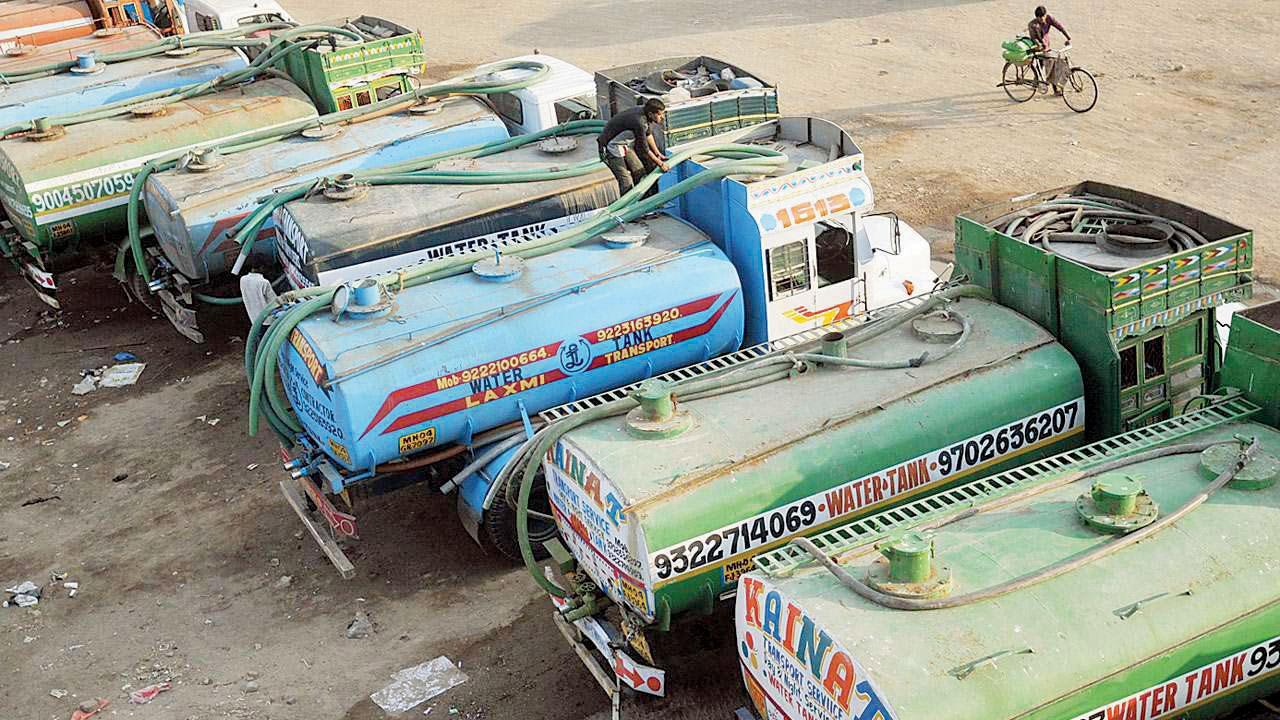Home / Mumbai / Mumbai News / Article /
Mumbai water shortage: The pain is more than just 10 per cent
Updated On: 19 June, 2024 06:48 AM IST | Mumbai | Team mid-day
On paper, the city faces a 10 per cent water cut; but other factors are adding to citizens’ woes

Water tanker service providers say they are struggling to meet the demand of Mumbaikars, crisis will worsen over time
Housing societies in the eastern and western suburbs are spending astronomical amounts of money on tanker services due to the 10 per cent water cut that is being implemented by the Brihanmumbai Municipal Corporation (BMC) across the city. Sources have told mid-day that 10,000 to 20,000 water tankers are catering to Mumbaikars every day as the city faces a daily water shortfall of 500 MLD on an average. Residents of Yogi Hills in Mulund West held a protest last week to highlight the water issue their housing complex has been facing. They have been depending on water tankers to meet their needs.

Water containers outside homes on Tuesday at Juhu Koliwada, which has been facing inadequate water supply for a month. Pic/Anurag Ahire



